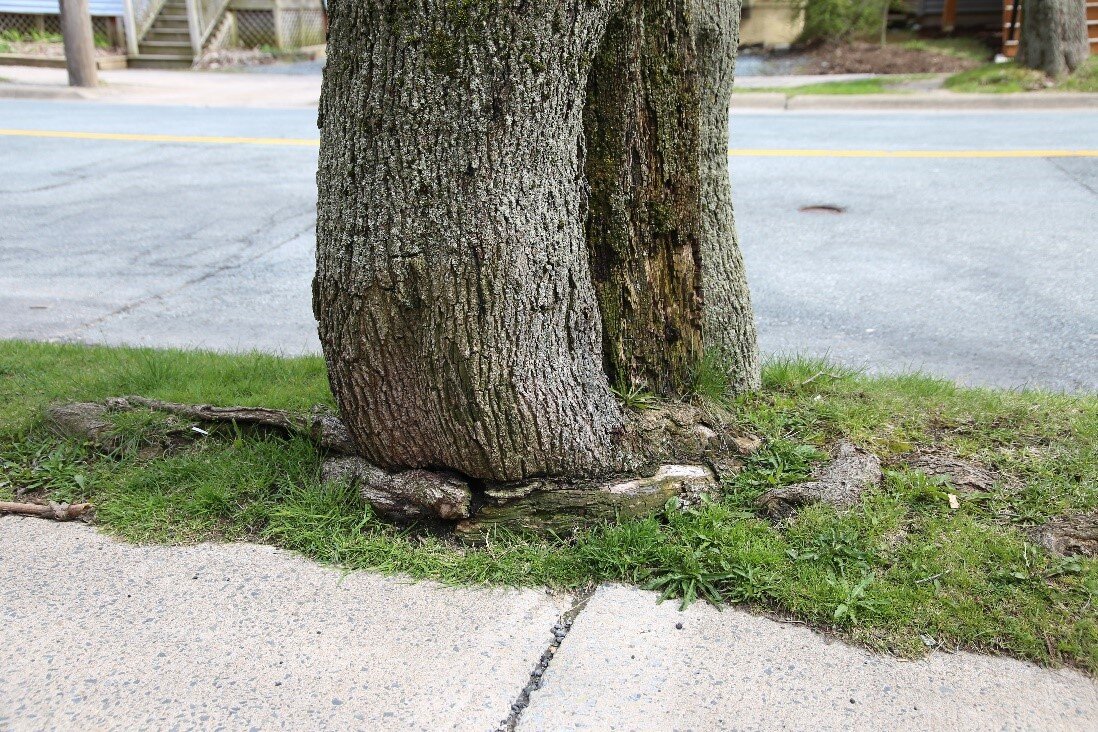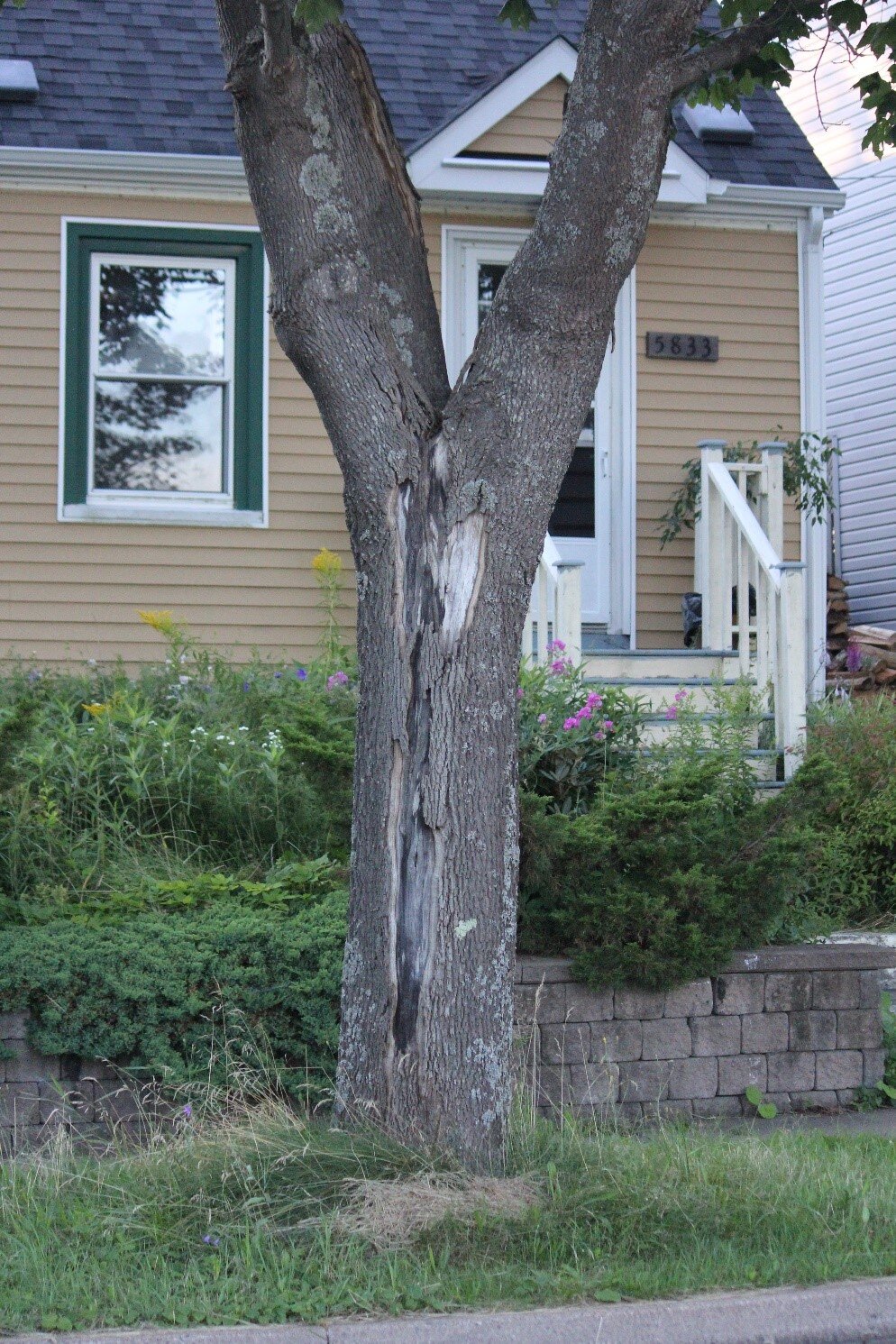the norway maple
Peter Duinker, Halifax Tree Project
2020-05-21
Our first profiled street-tree species for Halifax is the Norway maple. It is clearly the most abundant street tree we have. You might ask why. At Halifax Tree Project, we ask the same question. We have many factors to share, and it is impossible to determine which factors we identify below would be the most important in answering this question.
One factor is nursery availability and price. Norway maple (Acer platanoides L.) is naturally widely distributed across both western and eastern Europe. It has long been promoted for plantings in the streets of North American cities. It is easy to grow in the nursery, and the price per planting unit (a balled-and-burlapped caliper tree) has been attractive because of volume production. Norway maple does well in its early years in the street-side environment. Until recently, it has had few pests that jeopardize its survival or attractiveness in the streets of North American cities [recently, Norway maple has become infested with the tar-spot fungus Rhytisma acerinum – it doesn’t kill the trees, but makes the leaves unattractive]. Norway maple has one of the highest leaf-area indices – this means that it casts the strongest shades because the leaf area per unit of crown-projection area is so high. Additionally, Norway maple is among the earliest species to leaf-out in the spring, so people appreciate the spring greening.
Consequently, Norway maple has been very widely planted in the city and town streets of North America. Because Norway maple naturalizes so prolifically – in fact, so prolifically that many call it an invasive species – we find it flourishing in the backyards and park woodlands of most cities. Norway maple produces abundant viable seeds and its seedlings can easily take over lawns and gardens unless mowed or otherwise removed. Many city homeowners do not destroy all the tree seedlings growing near their properties’ fences, so Norway maples (and other tree species such as Manitoba maple and sycamore maple) flourish there. In my own central-Halifax home property, I had five Norway maples when we bought the property in 2002 – my guess is that only one was planted. Three have now been removed!
One may wonder why urban foresters across North America have declared war on Norway maple. So many of them have sworn off Norway maple in the past 20-25 years. Norway maples have the irritating tendency toward root girdling – roots circle around the stem and have a kind of choking effect (see photo). Norway maples also tend to build a rooting structure that bulks up and projects the tree upward out of the soil. We witness this abundantly in the streets of Halifax (see photo). Norway maples often do not have staying power in the street environment – they die young. Norway maples have an irritating habit of bark inclusion in major branch connections – that seriously weakens those connections and puts the trees at risk of major failure during high-wind storms (see photo). My own sense of the importance of this is that, while some 40% of the street trees in Halifax are Norway maples, some 90% of the trees needing cleanup after windstorms are Norway maples!
Norway maples are accused of having highly irritating pollen such that pollen-allergy sufferers are negatively affected in areas where the species is abundant. Another issue with Norway maple is the abundant material delivered to the ground (or deck). First it’s the flowers. Then it’s the seeds. Finally, it’s the leaves. It all adds up to lots of materials requiring daily cleanup – I know that from intense personal experience!
So, what should we make of Norway maple in the streets (and home properties) of Halifax? Let’s put it this way: is a bad tree better than no tree at all? Norway maple is not all bad. While many urban foresters detest it, we have an abundance of it and it provides most of the desired ecosystem services we expect from trees in the city. In fact, because of its high leaf-area index, it serves some ecosystem services better than any other tree species (e.g., density of shade).
I think a sensible approach is this – we cherish the Norway maples we have, we put up with Norway maple’s shortcomings and appreciate its strengths, and we gently nudge it out of our urban-forest canopies by no longer planting it. We are aware of people’s delight over the deep-red varieties of Norway maple – the Crimson King or Royal Red – however, it is possible to get a similar kind of effect using purple beech (Fagus sylvatica Dawyck purple) (in my view, a much better choice for both street and yard plantings). Please do not confuse the native red maple (Acer rubrum L.) with red-leaved Norway maples!
Now a word about the flag of Canada. Some say that the leaf on the flag is a sugar-maple leaf. Others say it is a Norway-maple leaf. Neither is correct. It is an artist’s stylized leaf representing maple trees in Canada. As an aside, it’s amazing to me how much confusion there is about the leaf on our flag. A 2012 book I have in my tree library – “The Beauty of Trees”, by M. Jordan with Tony Kirkham of the Arboretum at Kew Gardens as consultant – says this about red maple (Acer rubrum L.): “Since February 1965 its leaf has formed the centrepiece of the Canadian national flag . . .” Certainly not true! That is definitely an embarrassing error for the author, consultant (especially!), and publisher!
In conclusion, my view is that Norway maple was seriously overused in street-tree planting in Halifax. None has been planted by HRM in over two decades. That’s a good thing – we don’t need more Norway maples in Halifax’s streets. Norway maple will always be a component of our urban-tree canopy because of its natural proliferation in yards, parks, and other areas, but it is safe to say that it will no longer be planted in the streets by HRM. We should invite far more of our native maple species – particularly sugar maple and red maple – along the city’s streets!
As far as identification goes, Norway maple is pretty easy to identify. The leaves are NOT toothed along the margins – they are smooth (like those of sugar maple). The bark is finely ridged (see the first photo above). The petiole of the leaf delivers a white milk when squeezed – the sugar maple’s leaves do not. Norway maple’s buds burst early and provide a gorgeous light-green backdrop to the streetscape (see photos below taken on 18 May on Halifax-Peninsula streets). If a tree’s leaves in early autumn display tar spot, doubtless the tree is a Norway maple.
Next up will be American elm.




